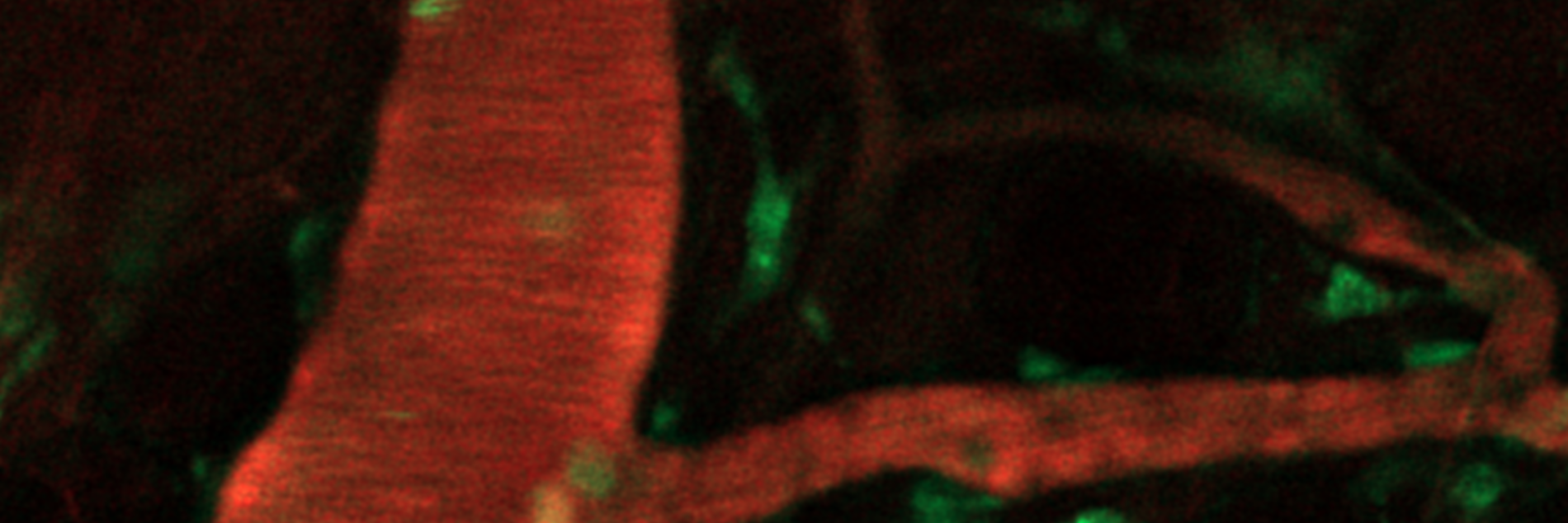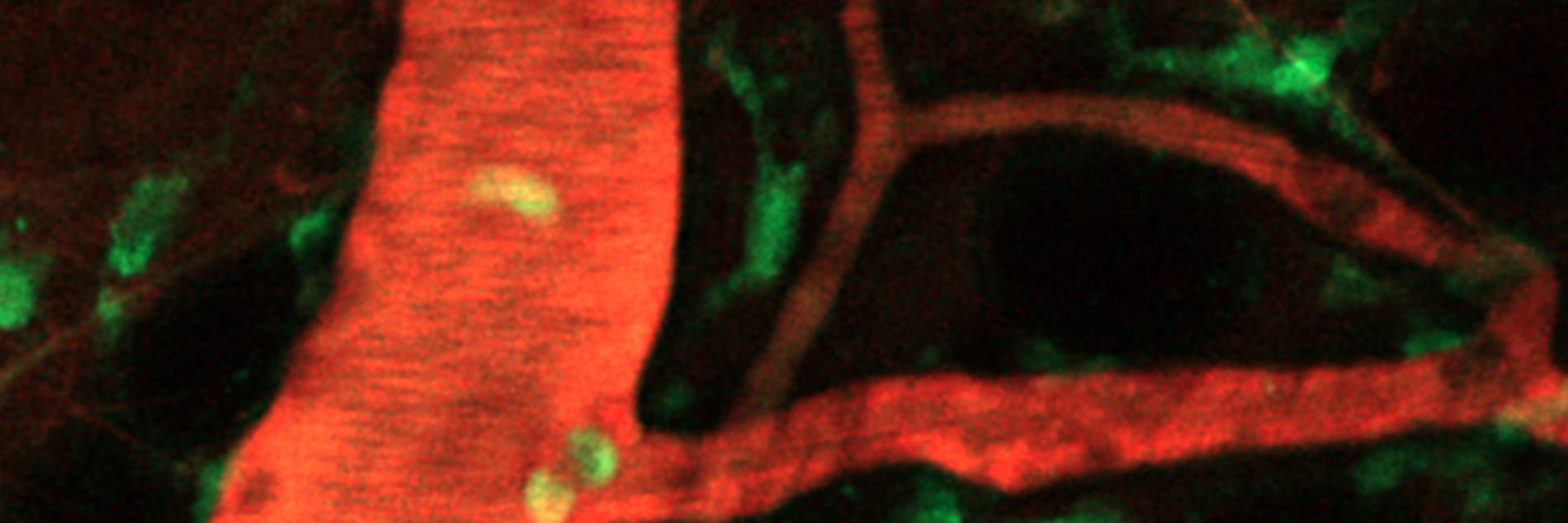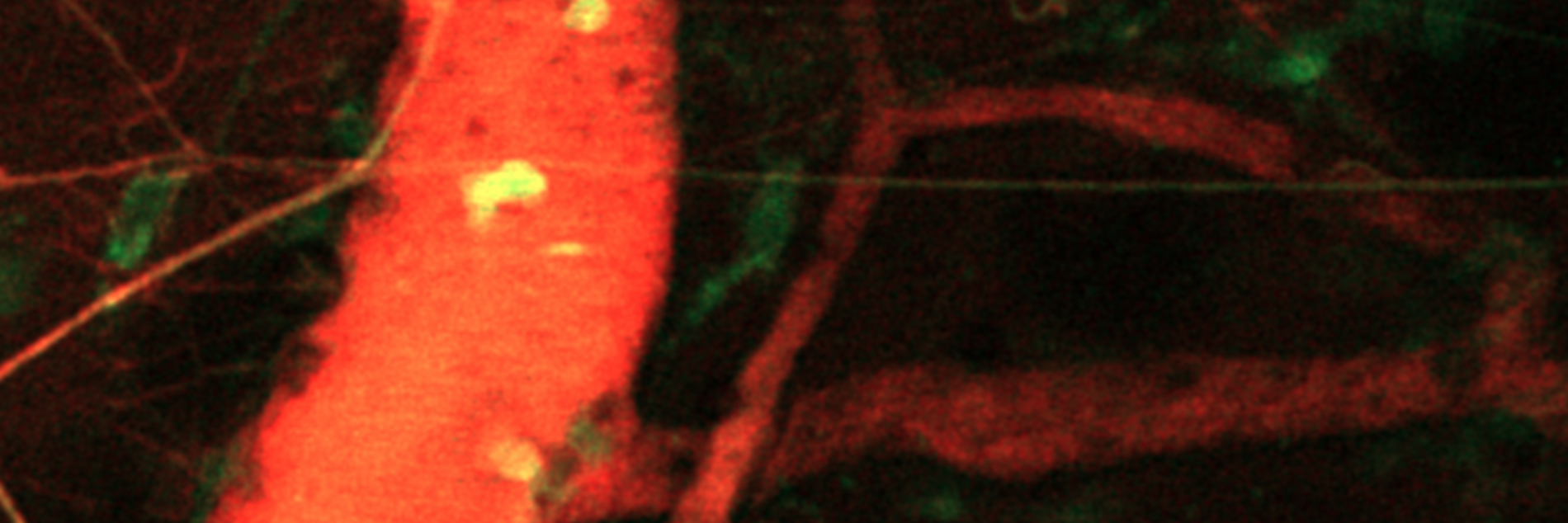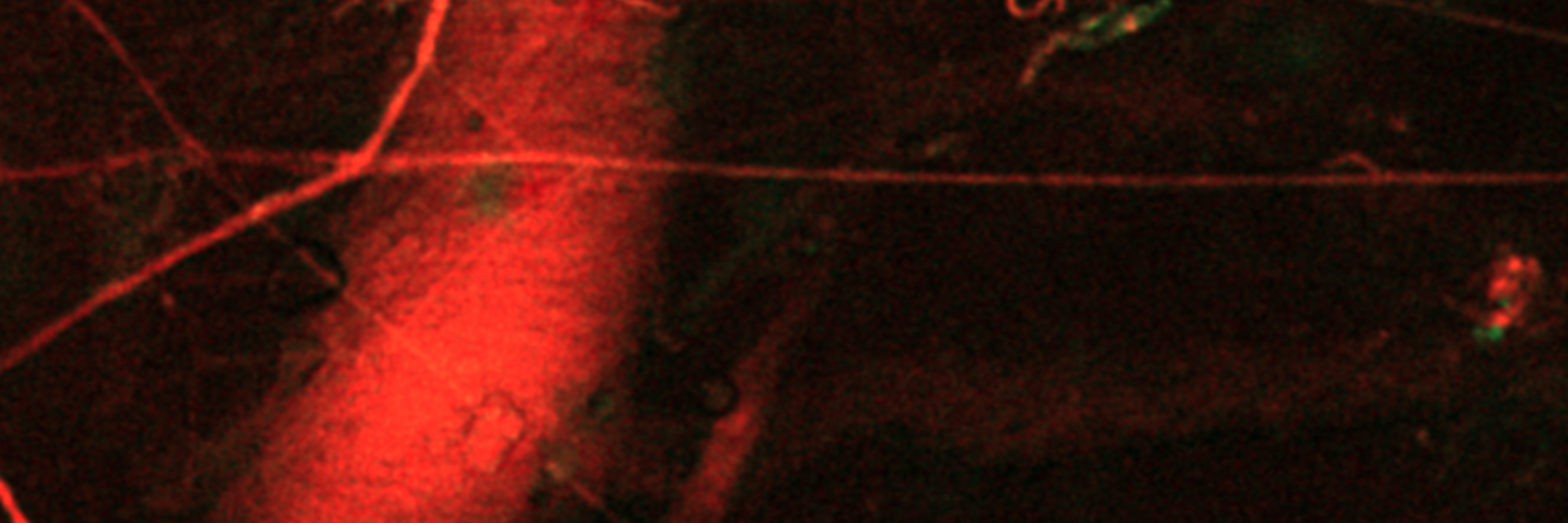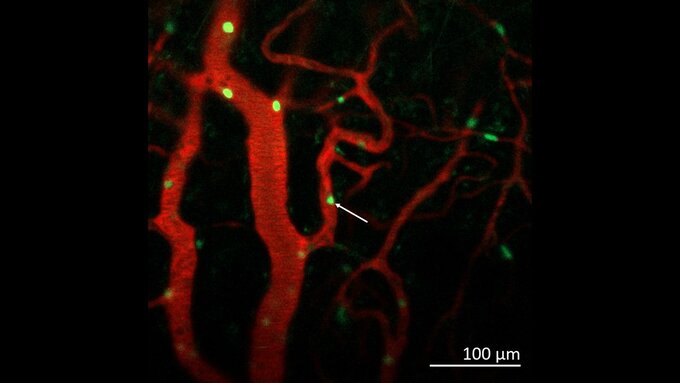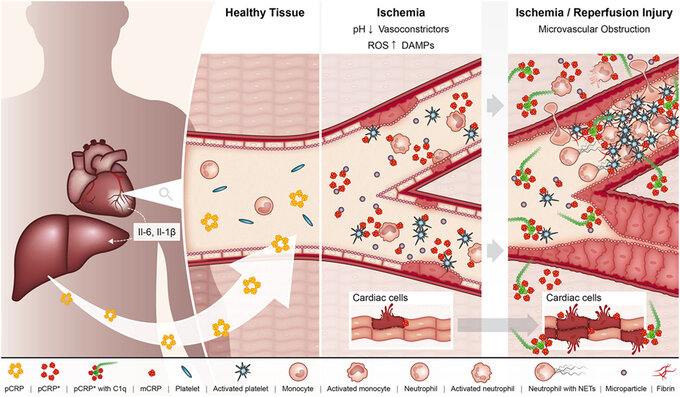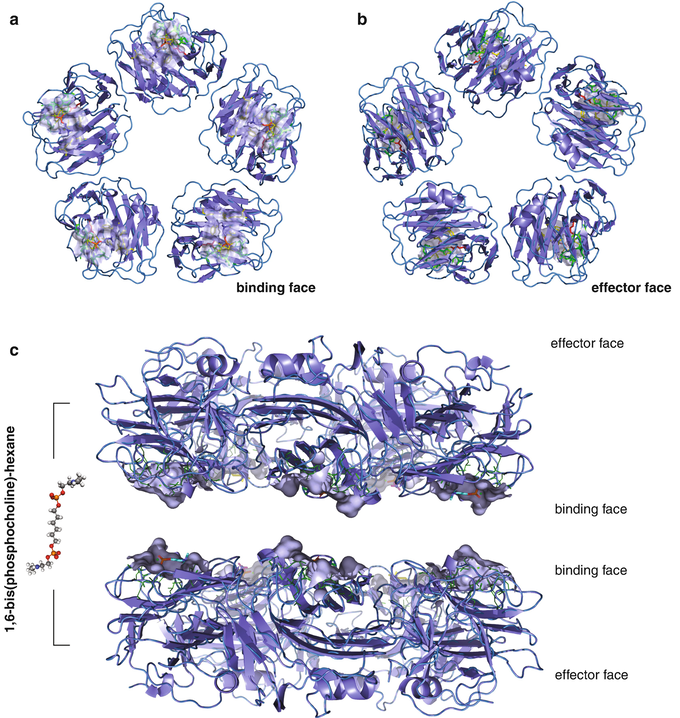Inflammation and reperfusion injury

Hr. Johannes Zeller
Inflammatory conditions affect the clinical outcome in all parts of plastic surgery. This particularly applies for inflammatory reactions after free flap surgery, a surgical technique where autologous tissue is used to close defects and to reconstruct function and outline of the body by connecting the vascular pedicle of the transplanted tissue to blood vessels of the recipient site during microsurgery.
The reperfusion of the ischemic tissue is after completing the anastomosis is both a blessing and a curse. The inflow of vital oxygen and nutrients into the transferred tissue is accompanied by immune cells and other pro-inflammatory messengers that can here provoke significant inflammatory reactions. The inflammatory damage can be strong enough to force cells into programmed cell death (Figure 1).
McFadyen JD, Kiefer J, Braig D, Loseff-Silver J, Potempa LA, Eisenhardt SU and Peter K (2018) Dissociation of C-Reactive Protein Localizes and Amplifies Inflammation: Evidence for a Direct Biological Role of C-Reactive Protein and Its Conformational Changes. Front. Immunol. 9:1351. doi: 10.3389/fimmu.2018.01351
Supported by the German Research Foundation (Deutsche Forschungsgemeinschaft, DFG), we use advanced methods of real-time digital intravital imaging to analyze microcirculatory changes after reperfusion of previous ischemic tissue (Figure 2).
The focus of this project is to analyze immune cells and their interactions with inflammatory mediators such as C-reactive Protein (CRP) in order to develop new therapeutic strategies that may influence the inflammatory cascade after free tissue transfer (Figure 3). Drug development and pharmacokinetic studies are conducted in cooperation with the Center for Biological Systems Analysis of the University of Freiburg (ZBSA).
- "Pharmacokinetic study of the novel phosphocholine derivative 4-Dibutylaminopropylphosphonic acid by LC-MS coupling." MG Kather, J Zeller, D Plattner, B Breit, S Kreuzer, G Krippner, K Peter, SU Eisenhardt, B Kammerer, Journal of Chromatography B. November 2021
- "CRP Enhances the Innate Killing Mechanisms Phagocytosis and ROS Formation in a Conformation and Complement-Dependent Manner." J Zeller, B Bogner, J Kiefer, D Braig, O Winninger, M Fricke, E Karasu, K Peter, M Huber-Lang, SU Eisenhardt, Frontiers in Immunology, August 2021
- "An Unbiased Flow Cytometry-Based Approach to Assess Subset-Specific Circulating Monocyte Activation and Cytokine Profile in Whole Blood." J Kiefer*, J Zeller*, B Bogner, IA Hörbrand, F Lang, E Deiss, O Winninger, M Fricke, S Kreupeler, E Smudde, M Huber-Lang, K Peter, SU Eisenhardt, Frontiers in Immunology, April 2021
- "C-Reactive Protein and Its Structural Isoforms: An Evolutionary Conserved Marker and Central Player in Inflammatory Diseases and Beyond." JD McFadyen, J Zeller, LA Potempa, GA Pietersz, SU Eisenhardt, K Peter, Subcell Biochem., 2020
- "Targeting C-Reactive Protein in Inflammatory Disease" J Zeller, SU Eisenhardt, Regenerative Medicine and Plastic Surgery, pp 173-186, 2019
- "A Conformational Change in C-Reactive Protein Enhances Leukocyte Recruitment and Reactive Oxygen Species Generation in Ischemia/Reperfusion Injury" J Zeller*, JR Thiele*, J Kiefer, D Braig, GB Stark, SU Eisenhardt et al., Frontiers in Immunology, 2018
- "Dissociation of C-Reactive Protein Localizes and Amplifies Inflammation: Evidence for a Direct Biological Role of C-Reactive Protein and Its Conformational Changes" JD McFadyen*, J Kiefer*, D Braig, SU Eisenhardt et al., Frontiers in Immunology, 2018
- "Transitional changes in the CRP structure lead to the exposure of proinflammatory binding sites" D Braig, JR Thiele, J Zeller, J Kiefer, GB Stark, SU Eisenhardt et al., Nature Communications, 2017
- "Dissociation of pentameric to monomeric C-reactive protein localizes and aggravates inflammation: in vivo proof of a powerful proinflammatory mechanism and a new anti-inflammatory strategy" JR Thiele, D Braig, H Bannasch, GB Stark, SU Eisenhardt, Circulation, 2014
- "A conformational change of C-reactive protein in burn wounds unmasks its proinflammatory properties" D Braig, JR Thiele, H Bannasch, GB Stark, SU Eisenhardt et al., Int Immunol, 2014
- "C-reactive protein: how conformational changes influence inflammatory properties" SU Eisenhardt, JR Thiele, H Bannasch, GB Stark et al., Cell Cycle, 2009
- "Dissociation of pentameric to monomeric C-reactive protein on activated platelets localizes inflammation to atherosclerotic plaques" SU Eisenhardt et al., Circulation Research, 2009

